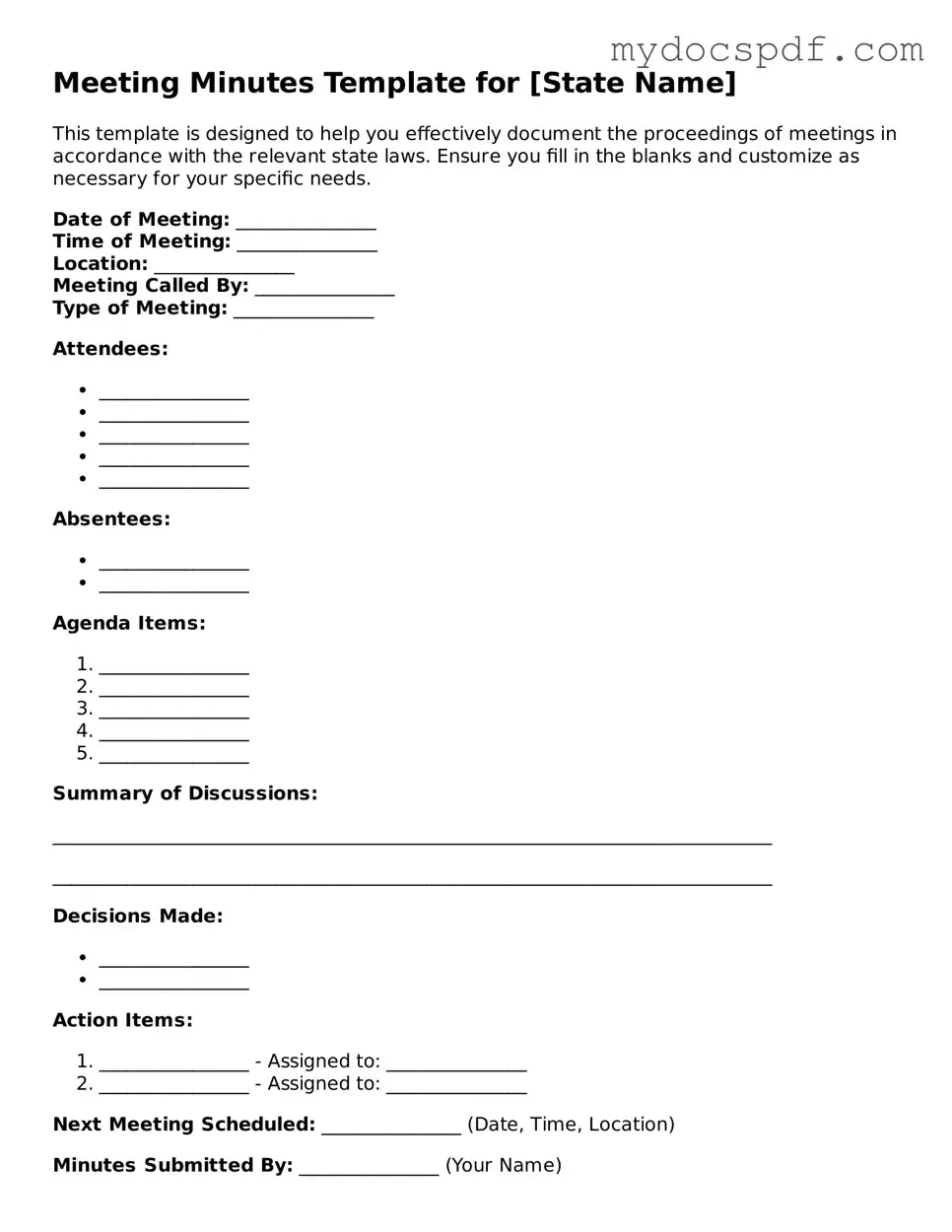Meeting Minutes Template for [State Name]
This template is designed to help you effectively document the proceedings of meetings in accordance with the relevant state laws. Ensure you fill in the blanks and customize as necessary for your specific needs.
Date of Meeting: _______________
Time of Meeting: _______________
Location: _______________
Meeting Called By: _______________
Type of Meeting: _______________
Attendees:
- ________________
- ________________
- ________________
- ________________
- ________________
Absentees:
- ________________
- ________________
Agenda Items:
- ________________
- ________________
- ________________
- ________________
- ________________
Summary of Discussions:
_____________________________________________________________________________
_____________________________________________________________________________
Decisions Made:
- ________________
- ________________
Action Items:
- ________________ - Assigned to: _______________
- ________________ - Assigned to: _______________
Next Meeting Scheduled: _______________ (Date, Time, Location)
Minutes Submitted By: _______________ (Your Name)
Date of Submission: _______________
